-
 Bitcoin
Bitcoin $82,509.8850
-2.52% -
 Ethereum
Ethereum $1,800.3816
-3.46% -
 Tether USDt
Tether USDt $0.9996
-0.02% -
 XRP
XRP $2.0537
-1.80% -
 BNB
BNB $589.5226
-1.44% -
 USDC
USDC $1.0000
0.02% -
 Solana
Solana $116.3439
-6.85% -
 Dogecoin
Dogecoin $0.1595
-5.58% -
 Cardano
Cardano $0.6479
-2.79% -
 TRON
TRON $0.2366
-0.33% -
 Toncoin
Toncoin $3.5766
-9.59% -
 UNUS SED LEO
UNUS SED LEO $9.3922
-0.34% -
 Chainlink
Chainlink $12.7758
-5.57% -
 Stellar
Stellar $0.2586
-2.92% -
 Avalanche
Avalanche $18.1038
-3.99% -
 Sui
Sui $2.2274
-5.69% -
 Shiba Inu
Shiba Inu $0.0...01219
-1.98% -
 Hedera
Hedera $0.1627
-3.05% -
 Polkadot
Polkadot $4.0427
-1.01% -
 Litecoin
Litecoin $82.8658
-2.85% -
 MANTRA
MANTRA $6.3993
1.10% -
 Bitcoin Cash
Bitcoin Cash $298.9153
-0.95% -
 Bitget Token
Bitget Token $4.4795
-2.24% -
 Dai
Dai $0.9999
0.01% -
 Ethena USDe
Ethena USDe $0.9994
-0.04% -
 Hyperliquid
Hyperliquid $11.7782
-8.21% -
 Monero
Monero $212.0245
-3.58% -
 Pi
Pi $0.5720
-14.14% -
 Uniswap
Uniswap $5.8118
-4.56% -
 Aptos
Aptos $5.0504
-4.12%
What are the differences between public chains, private chains, and consortium chains?
Public chains offer transparency and decentralization but can be slow; private chains prioritize speed and control; consortium chains balance these aspects for collaborative projects.
Mar 27, 2025 at 10:56 am
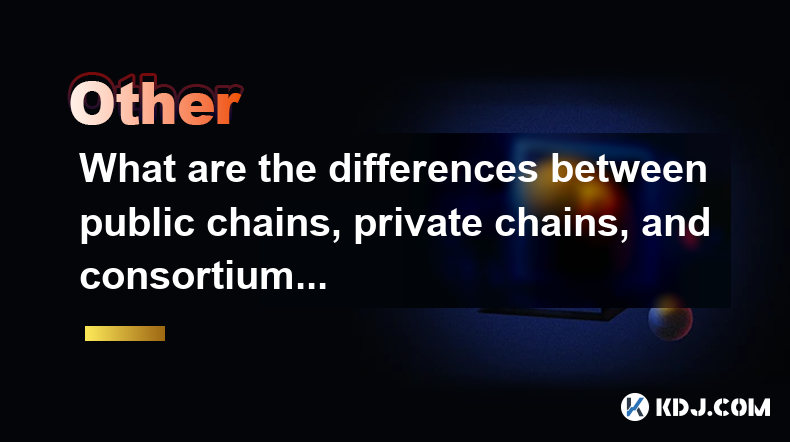
Understanding Blockchain Network Architectures: Public, Private, and Consortium Chains
The blockchain landscape features various network architectures, each designed for different purposes and offering unique characteristics. The three most prominent are public, private, and consortium blockchains. Understanding their differences is crucial for navigating the complexities of the crypto world.
Public chains, like Bitcoin and Ethereum, are open to everyone. Anyone can participate in the network, read the blockchain's data, and contribute to its consensus mechanism. This openness fosters transparency and decentralization, but can lead to scalability issues and vulnerability to attacks. Transaction verification is distributed across many nodes, ensuring security and immutability. However, this decentralized nature can also result in slower transaction speeds compared to other types of blockchains.
Private chains, in contrast, are permissioned networks. Access is controlled by a single entity or organization, which dictates who can participate. This centralized approach prioritizes speed and efficiency, as transaction validation is typically handled by a smaller, trusted group of nodes. Privacy is also enhanced, as only authorized participants can view the blockchain's data. However, this centralized control can compromise the security and immutability benefits often associated with blockchain technology.
Consortium blockchains represent a middle ground between public and private chains. They are permissioned networks, meaning access is restricted to pre-approved participants. However, unlike private chains, control is distributed among multiple organizations, fostering a degree of decentralization and trust. This shared governance model can enhance security and transparency while maintaining the efficiency of a permissioned system. The specific rules and access permissions are jointly determined by the participating organizations.
Let's delve deeper into the key distinctions between these three types of blockchains:
Data Accessibility and Transparency
- Public Chains: Completely open and transparent. Anyone can view all transactions and the entire blockchain history.
- Private Chains: Data is only accessible to authorized participants within the network. Transparency is limited to those with permission.
- Consortium Chains: Data accessibility is controlled by the consortium members. Transparency levels vary depending on the specific consortium's rules and agreements.
Permissioning and Participation
- Public Chains: Permissionless. Anyone can join the network, create accounts, and participate in consensus.
- Private Chains: Permissioned. Access is granted only by the network administrator or owner.
- Consortium Chains: Permissioned. Access is granted by the consortium members to pre-approved participants.
Consensus Mechanisms
- Public Chains: Typically utilize Proof-of-Work (PoW) or Proof-of-Stake (PoS) for consensus, ensuring the integrity of the blockchain.
- Private Chains: Can use various consensus mechanisms, often simpler and faster than those used in public chains, due to the smaller number of nodes. This might include Practical Byzantine Fault Tolerance (PBFT).
- Consortium Chains: The choice of consensus mechanism depends on the specific consortium's needs and preferences, often opting for hybrid approaches.
Scalability and Performance
- Public Chains: Can struggle with scalability, particularly when dealing with high transaction volumes.
- Private Chains: Generally offer superior scalability and performance due to their centralized nature and faster transaction processing.
- Consortium Chains: Scalability lies somewhere between public and private chains, depending on the number of participants and the chosen consensus mechanism.
Security and Trust
- Public Chains: Security relies on the decentralized nature of the network and the cryptographic security of the blockchain itself.
- Private Chains: Security relies on the security measures implemented by the network administrator. A single point of failure exists.
- Consortium Chains: Security is enhanced by the shared responsibility among consortium members, but vulnerabilities can still exist.
Use Cases
- Public Chains: Ideal for decentralized applications (dApps), cryptocurrencies, and transparent, immutable record-keeping.
- Private Chains: Suitable for internal applications within an organization, supply chain management, and secure data sharing within a controlled environment.
- Consortium Chains: Well-suited for collaborative projects involving multiple organizations, inter-bank transactions, and shared data management within a trusted ecosystem.
Frequently Asked Questions
Q: What is the best type of blockchain for my needs?
A: The optimal choice depends on your specific requirements. Consider factors like data privacy, transaction speed, scalability, and the level of decentralization you need. Public chains prioritize decentralization and transparency, private chains offer speed and control, while consortium chains balance these aspects.
Q: Can a private blockchain be converted to a public blockchain?
A: Technically, it's possible, but it's a complex process that requires significant changes to the network architecture and consensus mechanisms. It's not a simple switch.
Q: What are the limitations of consortium blockchains?
A: Consortium blockchains can be slower than private chains, and their level of decentralization is less than that of public chains. Reaching consensus among multiple organizations can also be challenging.
Q: Are consortium blockchains truly decentralized?
A: Consortium blockchains offer a degree of decentralization compared to private chains, as control is shared among multiple organizations. However, they are not as decentralized as public blockchains, where control is distributed among countless participants.
Q: What are the security risks associated with each type of blockchain?
A: Public chains face risks from 51% attacks and other forms of malicious activity. Private chains are vulnerable to single points of failure. Consortium chains face risks related to collusion among consortium members or compromise of a single member's node.
Disclaimer:info@kdj.com
The information provided is not trading advice. kdj.com does not assume any responsibility for any investments made based on the information provided in this article. Cryptocurrencies are highly volatile and it is highly recommended that you invest with caution after thorough research!
If you believe that the content used on this website infringes your copyright, please contact us immediately (info@kdj.com) and we will delete it promptly.
- How XRPL Utility Can Support Token Price Growth
- 2025-04-04 05:35:12
- Long-dormant Bitcoin wallets have suddenly sprung to life
- 2025-04-04 05:35:12
- ExoraPad ($EXP), an innovative AI-powered launchpad exclusively developed for the XRP Ledger (XRPL), has reached an impressive milestone
- 2025-04-04 05:30:12
- XRP Price Surge Could Enable Early Retirement for Numerous Investors
- 2025-04-04 05:30:12
- XRP Price Prediction: Will XRP Bounce From This Support Or Continue Its Descent?
- 2025-04-04 05:25:12
- As US Treasury yields hit 6-month lows, Bitcoin (BTC) price may be poised for a breakout
- 2025-04-04 05:25:12
Related knowledge
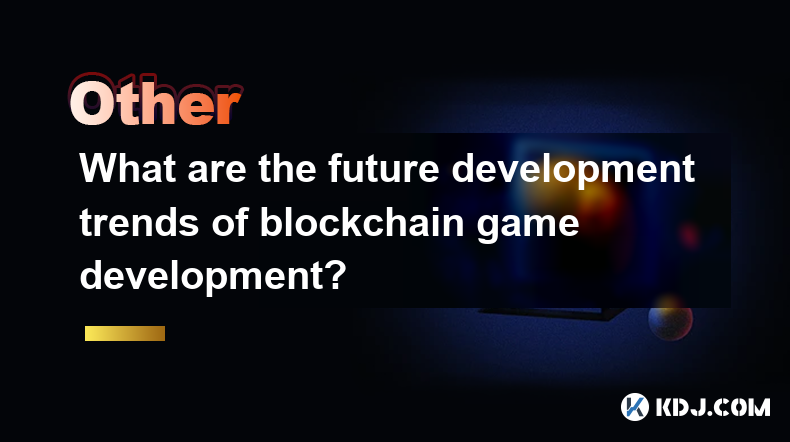
What are the future development trends of blockchain game development?
Apr 03,2025 at 05:00am
Blockchain technology has revolutionized various industries, and gaming is no exception. As we look to the future, several trends are set to shape the development of blockchain games. These trends not only promise to enhance the gaming experience but also to integrate blockchain technology more seamlessly into the gaming ecosystem. Let's explore these t...
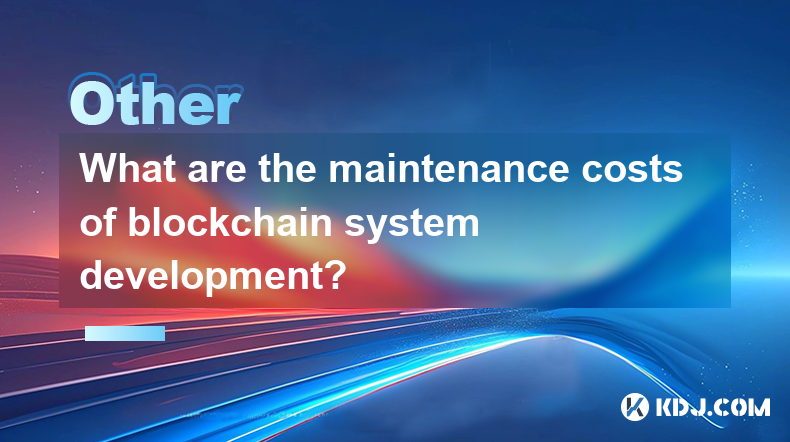
What are the maintenance costs of blockchain system development?
Apr 03,2025 at 06:07pm
The maintenance costs of blockchain system development are multifaceted and depend on various factors. These costs can include technical maintenance, security updates, infrastructure expenses, and personnel costs. Understanding these elements is crucial for anyone planning to develop or maintain a blockchain system. Technical MaintenanceTechnical mainte...
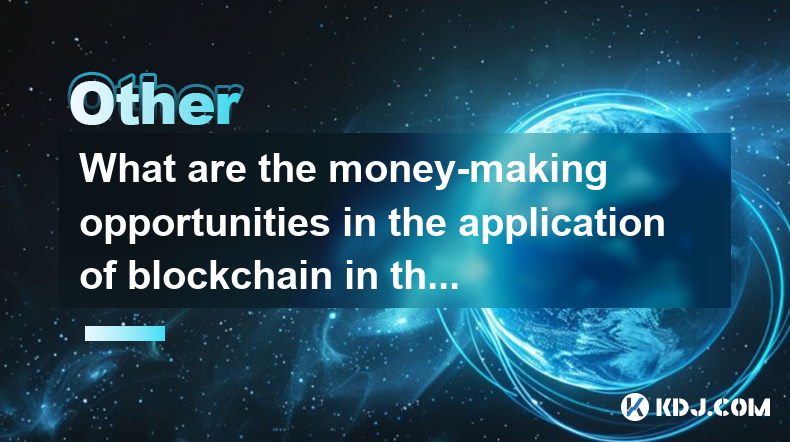
What are the money-making opportunities in the application of blockchain in the medical industry?
Apr 03,2025 at 03:35am
The integration of blockchain technology into the medical industry presents a myriad of money-making opportunities that can revolutionize healthcare systems. Blockchain's inherent characteristics, such as transparency, security, and immutability, make it an ideal solution for various medical applications. By leveraging blockchain, companies can develop ...

What are the money-making opportunities when blockchain and artificial intelligence are combined?
Apr 04,2025 at 01:28am
The convergence of blockchain and artificial intelligence (AI) presents a myriad of money-making opportunities within the cryptocurrency circle. This fusion leverages the decentralized and secure nature of blockchain with the analytical prowess of AI, creating innovative solutions and platforms that can generate significant revenue. From enhancing tradi...
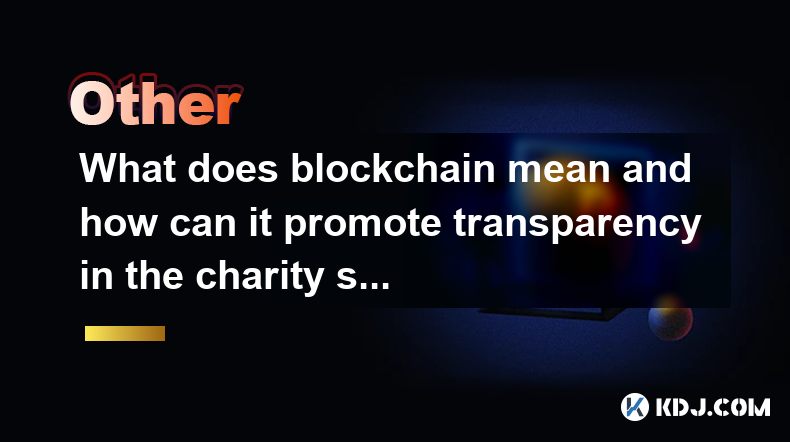
What does blockchain mean and how can it promote transparency in the charity sector?
Apr 03,2025 at 08:29pm
Blockchain technology is a decentralized, distributed ledger that records transactions across numerous computers. This ensures that the data is transparent and nearly impossible to alter retroactively. Essentially, blockchain serves as a digital ledger of all cryptocurrency transactions, enabling secure and direct exchanges without the need for intermed...
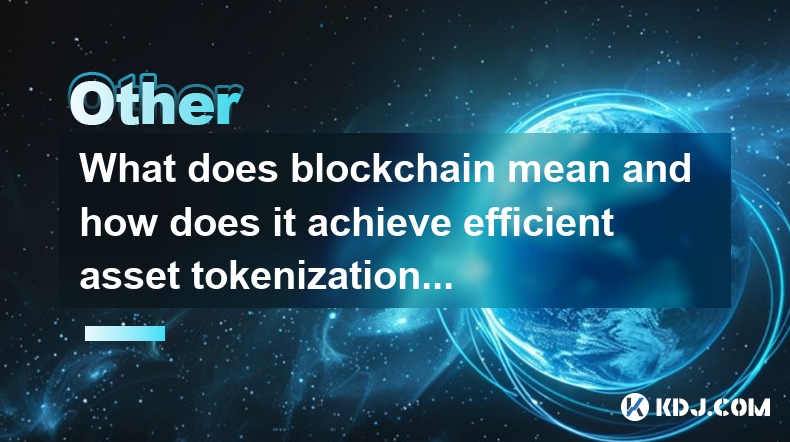
What does blockchain mean and how does it achieve efficient asset tokenization?
Apr 03,2025 at 07:57pm
Blockchain technology is a decentralized, distributed ledger that records transactions across numerous computers. It ensures that each transaction is secure, transparent, and immutable. The concept of blockchain was introduced with the launch of Bitcoin in 2009, but its applications have since expanded far beyond cryptocurrencies. At its core, blockchai...

What are the future development trends of blockchain game development?
Apr 03,2025 at 05:00am
Blockchain technology has revolutionized various industries, and gaming is no exception. As we look to the future, several trends are set to shape the development of blockchain games. These trends not only promise to enhance the gaming experience but also to integrate blockchain technology more seamlessly into the gaming ecosystem. Let's explore these t...

What are the maintenance costs of blockchain system development?
Apr 03,2025 at 06:07pm
The maintenance costs of blockchain system development are multifaceted and depend on various factors. These costs can include technical maintenance, security updates, infrastructure expenses, and personnel costs. Understanding these elements is crucial for anyone planning to develop or maintain a blockchain system. Technical MaintenanceTechnical mainte...

What are the money-making opportunities in the application of blockchain in the medical industry?
Apr 03,2025 at 03:35am
The integration of blockchain technology into the medical industry presents a myriad of money-making opportunities that can revolutionize healthcare systems. Blockchain's inherent characteristics, such as transparency, security, and immutability, make it an ideal solution for various medical applications. By leveraging blockchain, companies can develop ...

What are the money-making opportunities when blockchain and artificial intelligence are combined?
Apr 04,2025 at 01:28am
The convergence of blockchain and artificial intelligence (AI) presents a myriad of money-making opportunities within the cryptocurrency circle. This fusion leverages the decentralized and secure nature of blockchain with the analytical prowess of AI, creating innovative solutions and platforms that can generate significant revenue. From enhancing tradi...

What does blockchain mean and how can it promote transparency in the charity sector?
Apr 03,2025 at 08:29pm
Blockchain technology is a decentralized, distributed ledger that records transactions across numerous computers. This ensures that the data is transparent and nearly impossible to alter retroactively. Essentially, blockchain serves as a digital ledger of all cryptocurrency transactions, enabling secure and direct exchanges without the need for intermed...

What does blockchain mean and how does it achieve efficient asset tokenization?
Apr 03,2025 at 07:57pm
Blockchain technology is a decentralized, distributed ledger that records transactions across numerous computers. It ensures that each transaction is secure, transparent, and immutable. The concept of blockchain was introduced with the launch of Bitcoin in 2009, but its applications have since expanded far beyond cryptocurrencies. At its core, blockchai...
See all articles






















































































